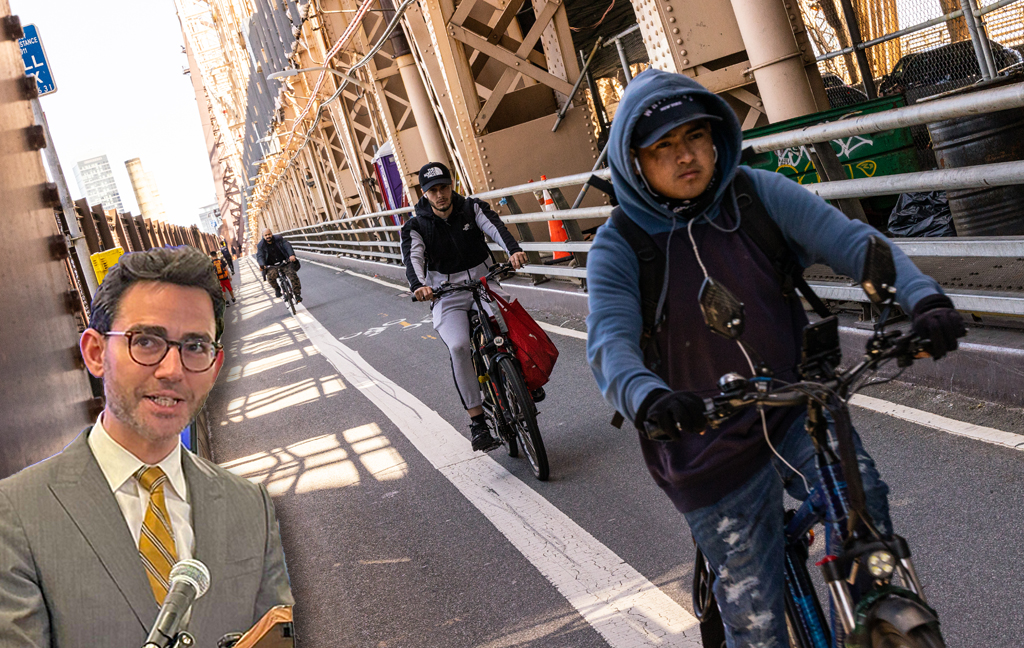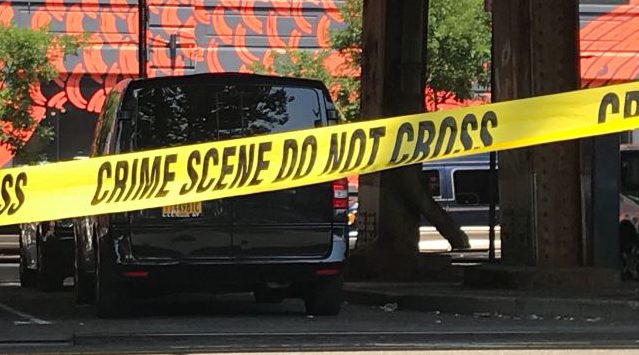
The Nyhavn or "New Harbor." Twenty years ago Copenhagen's quaint inner harbor was a parking lot. Today it is one of the city's most popular and iconic outdoor destinations.
For the next week or so I will be blogging from Copenhagen, Denmark and the Netherlands. Ahh, the glamorous, jet-setting life of the professional blogger. I am here on a German Marshall Fellowship in Comparative Domestic Policy. As part of the Fellowship I will be visiting a number of European cities over the next few months to learn more about how people over there are reclaiming their streets from automobiles and improving their public spaces.
I am in Copenhagen to attend a conference called Public Spaces / Public Life. The event is being organized by urban designer Jan Gehl's Center for Public Space Research. The Royal Institute of British Architects awarded Copenhagen the title of European City of the Year for 2005, primarily for the extensive work that the city has done to reduce traffic congestion and improve conditions for pedestrians, cyclists and users of public space. The conference is a celebration of that award and an opportunity for Copenhagen's designers and city officials to show off their work to an international audience. There are about 500 people in attendance, mostly planners and architects from European cities. I'll be snapping lots of photos and talking with some interesting people, so stay tuned.
 Jan Gehl, pictured at right leading yesterday's boat tour in Copenhagen Harbor, kicked off the conference noting that throughout the history of humankind, urban public spaces have served three functions. Public space is the place where people meet, connect and share information, it is the marketplace where goods are bought and sold, and it provides the access routes where people and goods are transported.
Jan Gehl, pictured at right leading yesterday's boat tour in Copenhagen Harbor, kicked off the conference noting that throughout the history of humankind, urban public spaces have served three functions. Public space is the place where people meet, connect and share information, it is the marketplace where goods are bought and sold, and it provides the access routes where people and goods are transported.
At the beginning of the 20th century, Gehl says, most urban areas still existed as the Traditional City. In the Traditional City the three functions of meeting, marketing, and moving were generally in harmony with each other. No one function dominated a majority of the city's public space.
But starting in the 1950's, throughout the Western world there began to emerge what Gehl calls the Invaded City. After World War II motor vehicles began to dominate cities' public spaces, gradually pushing the meeting and marketing functions out of the urban core.
Twenty years or so after the emergence of the Invaded City we began to see the Abandoned City. These were cities where people had simply given up. The sidewalks had disappeared. The spaces were empty. People had fled to the suburbs, leaving the urban core to traffic, to the poor, or to no one at all.
Today, Gehl says, were are beginning to see the emergence of the Reconquered City. These are cities where people have shown "a willingness to constrain motor vehicle traffic and an awareness that the city suffers a great loss when there is no public life." Gehl notes that people in Holland, Germany and Denmark were some of the first to begin reconquering their cities from the automobile, starting in the early 1960's. This is why I am doing this Fellowship. There are cities here in Europe with a forty year headstart on improving the quality of their public spaces. New York and other American cities can benefit enormously from the knowledge and experience that is here.
 I realize, however, that when you point out how well public spaces function over here -- and we've been doing a lot of foreign correspondence on Streetsblog lately -- New Yorkers and Americans often respond reflexively, "Well, that's there! We're different." But in 1962 when Copenhagen's (totally unpronouncable) Stroget was transformed into a pedestrian plaza the Danes likewise complained, "Hey, we're not Italians!"
I realize, however, that when you point out how well public spaces function over here -- and we've been doing a lot of foreign correspondence on Streetsblog lately -- New Yorkers and Americans often respond reflexively, "Well, that's there! We're different." But in 1962 when Copenhagen's (totally unpronouncable) Stroget was transformed into a pedestrian plaza the Danes likewise complained, "Hey, we're not Italians!"
"Nobody could believed that it could be done when it was done," Gehl says. "Now no one can believe that it once had cars." I am certain that New Yorkers, twenty years from now, will be saying the same thing about a number of New York City streets, parks, and public spaces.
In the end, what's the big deal about public space and public life? Is the Reconquered City anything more than a place where yuppies can sip cappuccinos, ride bicycles and push their double-wide strollers in peace, safety and comfort? Gehl believes that urban public spaces are important for two compelling reasons:
First, a healthy urban public realm is a pre-condition for an environmentally sustainable city. More than 51 percent of the world's population now lives in urban areas and that percentage is increasing. But sprawl and automobile dependence are increasing too, chewing up the arable lands and polluting our earth, air and water. Healthy, functional, urban environments are essential for the future of the planet. For human civilization to continue, the world's big cities must be healthy human habitats.
Second, Gehl argues, healthy public space is essential to the function of democracy in a multicultural society. A democracy needs space where fellow citizens of all groups and ethnicities can meet each other, rub shoulders, talk to each other, and see what their society is made up of. Healthy public space, Gehl says, "creates a safer, less fearful society."
Thanks again to The German Marshall Fund for making this trip possible.





